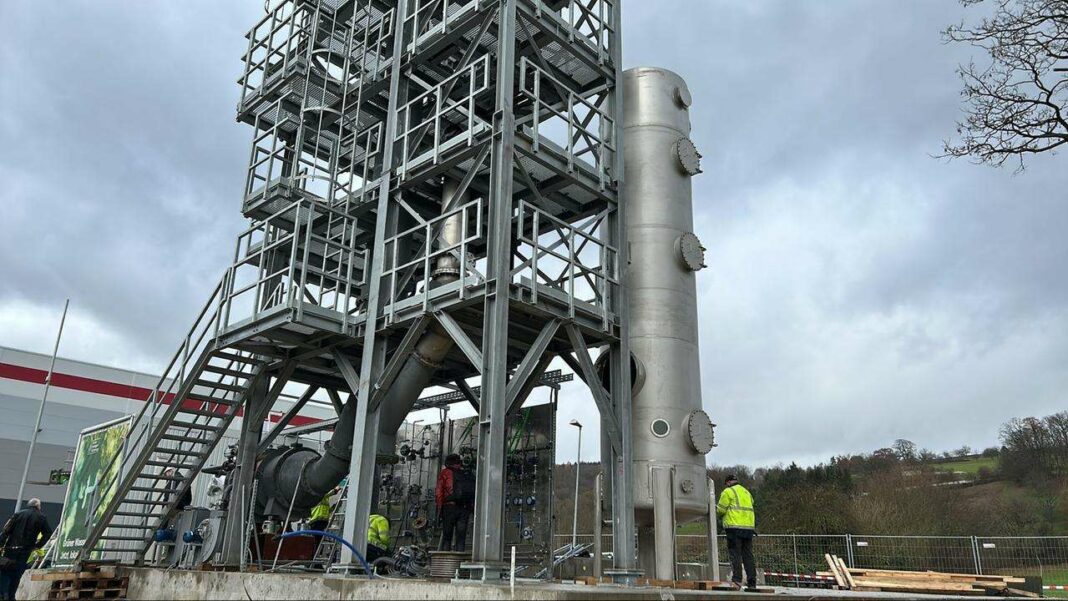Efforts to combat plastic waste face hurdles, but a pilot project in Swabia aims to innovate hydrogen production from plastics. Utilizing extreme heat, the facility transforms biomass and plastics into hydrogen while capturing CO2 for resale. Despite concerns about its environmental impact, the project offers a cost-effective alternative to traditional methods. With a target of producing 2,000 tons annually, it seeks to address Germany’s hydrogen needs amid rising plastic waste, marking a significant step in recycling technology.
The Challenge of Reducing Plastic Waste
The United Nations has struggled to implement effective regulations aimed at reducing plastic waste, and the industry faces challenges in adopting climate-neutral production methods. However, a groundbreaking pilot project at a recycling center in Swabia is stepping up to address both of these pressing issues.
Innovative Hydrogen Production from Plastic Waste
At a recycling facility in Ebersbach, Robert Nave, the managing director of Green Hydrogen Technology (GHT), highlights a pivotal moment for hydrogen production. Nestled within a towering metal structure are several pipes and a silo, marking the beginning of an ambitious initiative to extract climate-neutral hydrogen from plastics. This innovative method promises to lower production costs significantly.
The process relies on a cutting-edge technology that generates extreme heat, reaching temperatures of up to 1,600 degrees Celsius. This intense heat transforms biomass and plastics into hydrogen and CO2 using a flight stream reactor. While CO2 is produced as a byproduct, it will be liquefied for resale as carbonic acid to beverage manufacturers, keeping it within a closed-loop system.
Initially, wood dust will fuel the reactor, but Nave emphasizes that the ultimate goal is to convert all carbon-containing waste, including non-recyclable plastics, into hydrogen. Although the process emits CO2, Nave argues that this method is climate-neutral since it prevents these materials from being discarded in incineration plants, which would otherwise release CO2 directly into the atmosphere.
However, Karsten Smid from Greenpeace raises concerns about the environmental claims surrounding this technology. He refers to the waste reactor as a form of ‘greenwashing,’ arguing that the hydrogen produced here does not qualify as climate-neutral. True climate-neutral hydrogen, or ‘green’ hydrogen, is generated through renewable energy sources such as wind and solar power via electrolysis, splitting water into oxygen and hydrogen. While the new reactor’s production costs are significantly lower than traditional methods, the debate over its environmental impact continues.
With aspirations to reduce production costs from five euros per kilogram to as low as 1.50 euros, GHT is actively seeking additional investors. The conventional electrolysis method currently costs around eight euros per kilogram. Despite the limitations of the Ebersbach facility—producing only 100 tons of hydrogen annually—there is already interest from companies like Hylane, which operates a hydrogen truck fleet and is eager for significant quantities of hydrogen.
Looking ahead, Germany’s hydrogen strategy envisions a need for approximately three million tons of hydrogen by 2030, which will necessitate an expansion of renewable energy sources and infrastructure. While the output from Ebersbach may be modest, the facility represents a step towards a larger solution, utilizing waste where it is generated. GHT aims to implement multiple projects over the next five years, targeting an annual production of 2,000 tons of hydrogen and tapping into a vast market of recycling companies in Germany.
According to the Federal Ministry of Economics, diverse industries must engage in innovative technologies to foster the hydrogen economy. The project in Ebersbach stands out as the world’s first of its kind, with GHT holding a patent on this cutting-edge technology. Interest in similar initiatives is growing globally, as researchers explore methods to produce hydrogen from hard-to-recycle plastics.
As the world grapples with increasing plastic waste—Germany alone generated 237 kilograms of packaging waste per capita in 2021—the urgency for effective solutions is paramount. While the project in Ebersbach cannot solve the entire problem, Robert Nave remains optimistic, stating that it represents a crucial piece of the larger puzzle, contingent upon successful outcomes from this pilot initiative and the development of additional reactors in the future.
